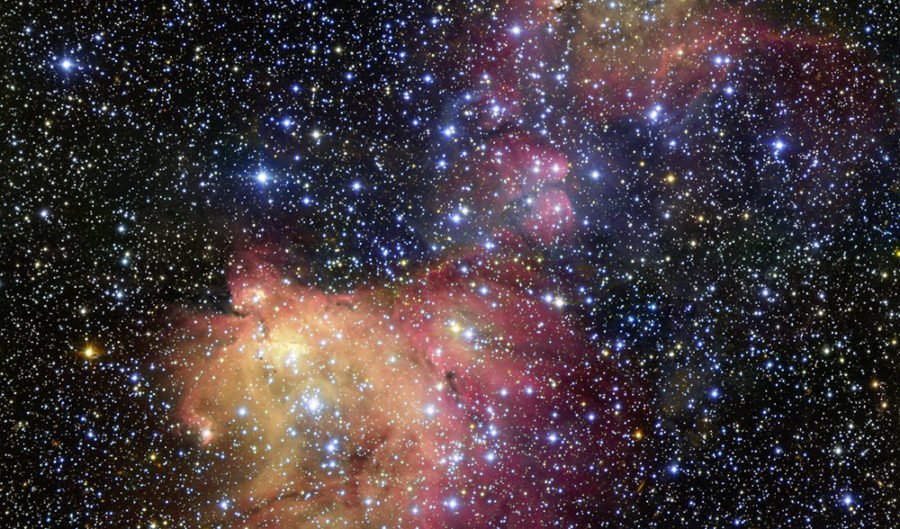Like a painting: stunning space image released

FITTINGLY DUBBED “STELLAR ornamentation”, this beautiful image shows a glowing cloud of star-forming gas and dust about 163,000 light years away.
The image was taken by the European Southern Observatory’s (ESO) Very Large Telescope and released yesterday.

The glowing gas cloud LHA 120-N55 in the Large Magellanic Cloud. (Image: ESO)
In the image, light from the blazing blue stars energises gas left over from the stars’ recent formation. The result is this strikingly colourful emission nebula called LHA 120-N55 (or just N55), located in a satellite galaxy of the Milky Way, called the Large Magellanic Cloud.
Astronomers study these beautiful displays to learn about the conditions in places where new stars develop.
RELATED: GALLERY: The heart and soul of our galaxy
N55 is situated inside a so-called ‘superbubble’ formed when the fierce winds from newly formed stars and shockwaves from supernova explosions blow away most of the gas and dust that originally surrounded them and create huge bubble-shaped cavities.
The material that became N55, however, managed to survive as a small remnant pocket of gas and dust. It is now a standalone nebula inside the superbubble along with a grouping of brilliant blue and white stars that also managed to form hundreds of millions of years after the events that originally blew up the superbubble.
The recent rise of a new population of stars also explains the colours surrounding the stars in this image, according to the ESO. The light from the powerful blue–white stars is stripping nearby hydrogen atoms in N55 of their electrons, causing the gas to glow in a characteristic pinkish colour in visible light.
Astronomers recognise this telltale signature of glowing hydrogen gas throughout galaxies as a hallmark of fresh star birth.
In a few million years, some of the massive and brilliant stars in the superbubble will likely go supernova, scattering the dust and gas of the nebula.
As the ESO put it: “In effect, a bubble will be blown within a superbubble, and the cycle of starry ends and beginnings will carry on in this close neighbour of our home galaxy.”
RELATED:
- Europa’s ocean may have Earth-like chemical balance
- What tiny meteorites can tell us about the ancient sky
- The number of known planets just doubled

